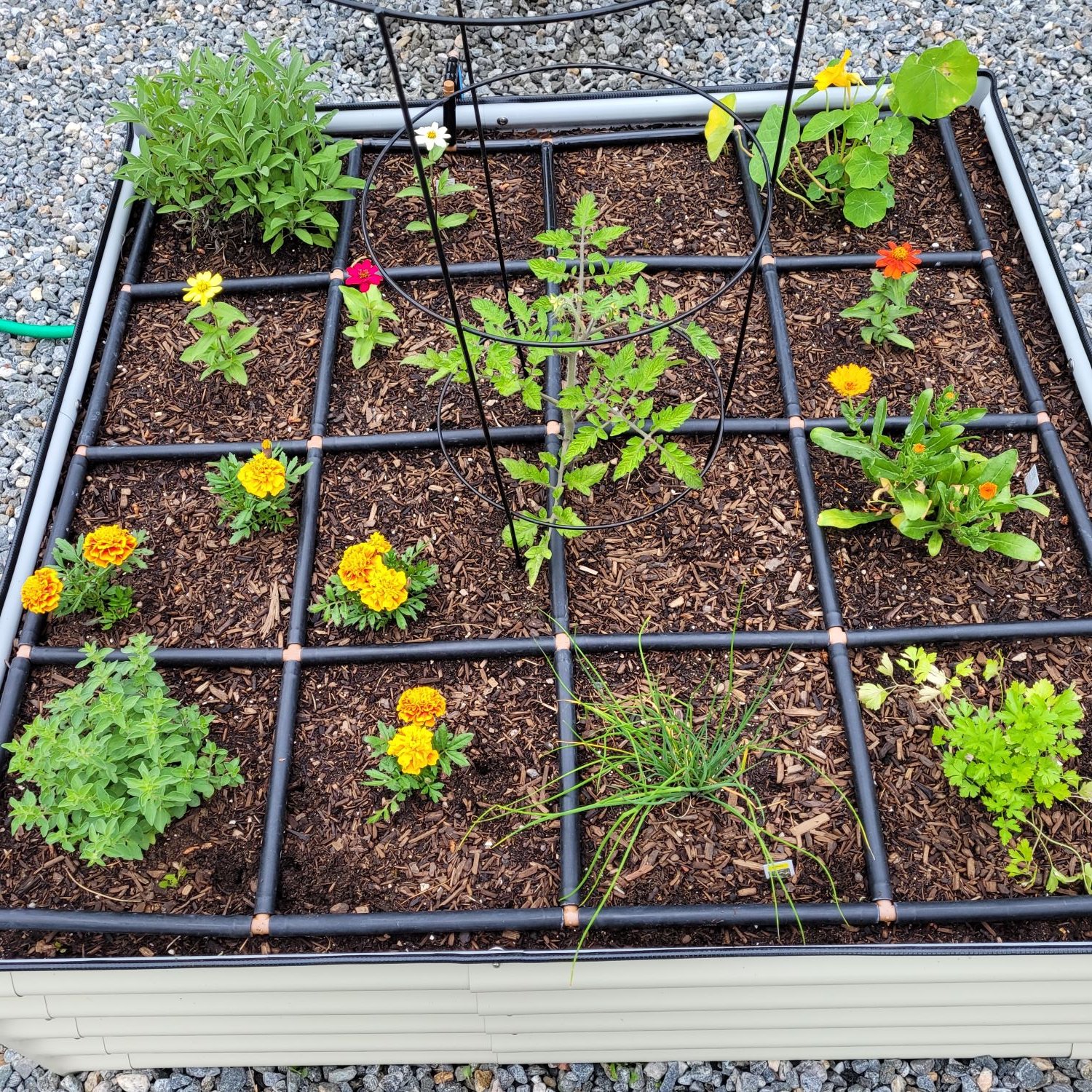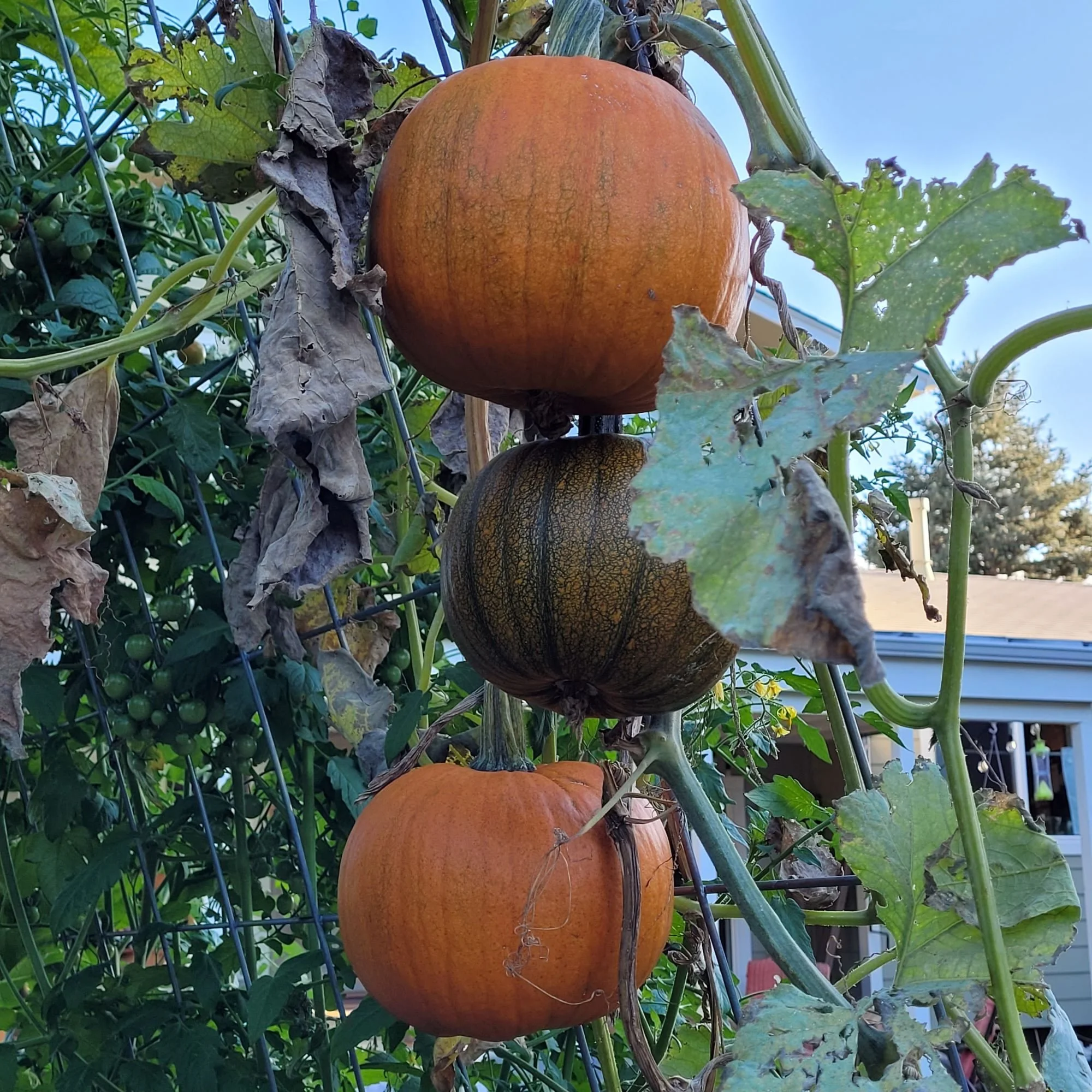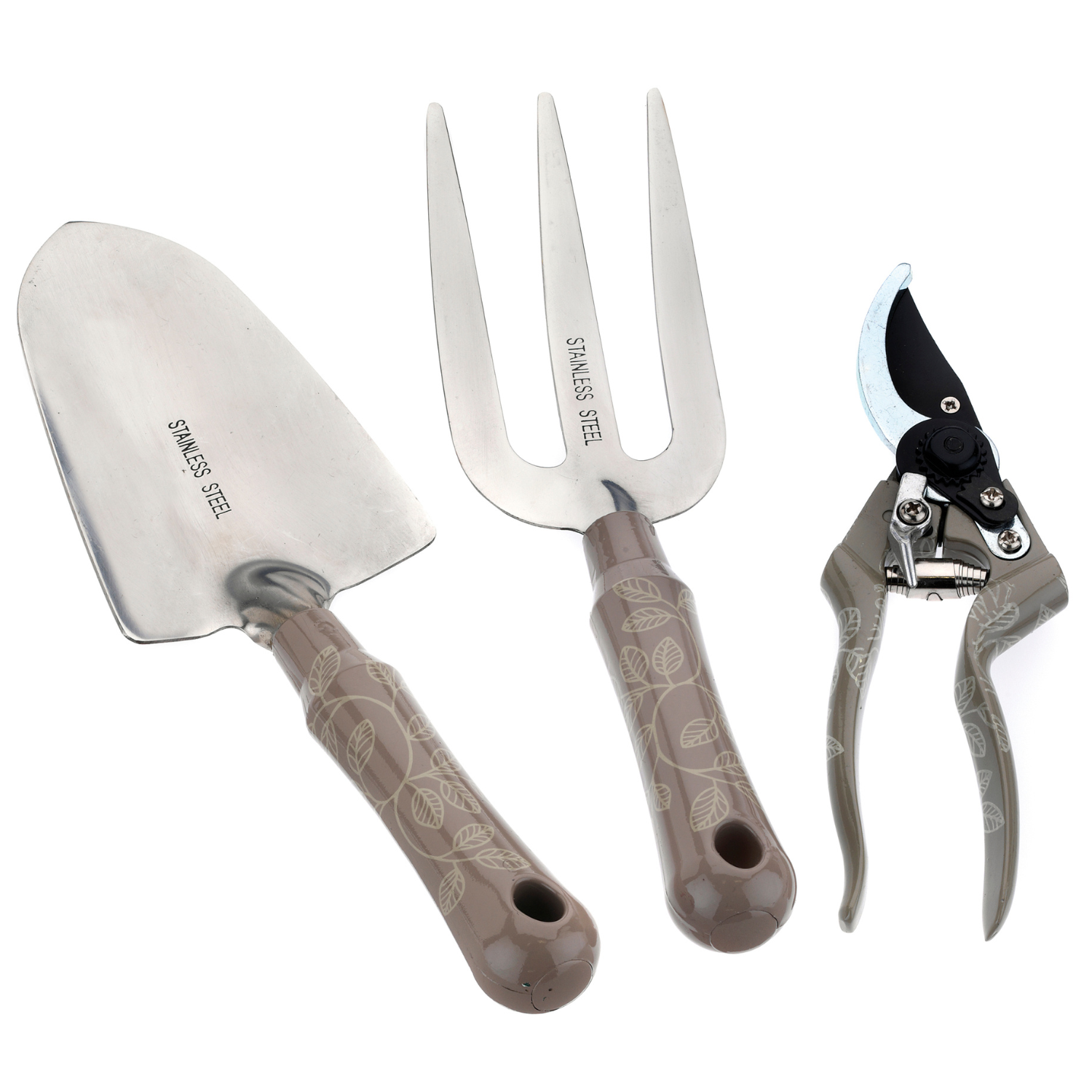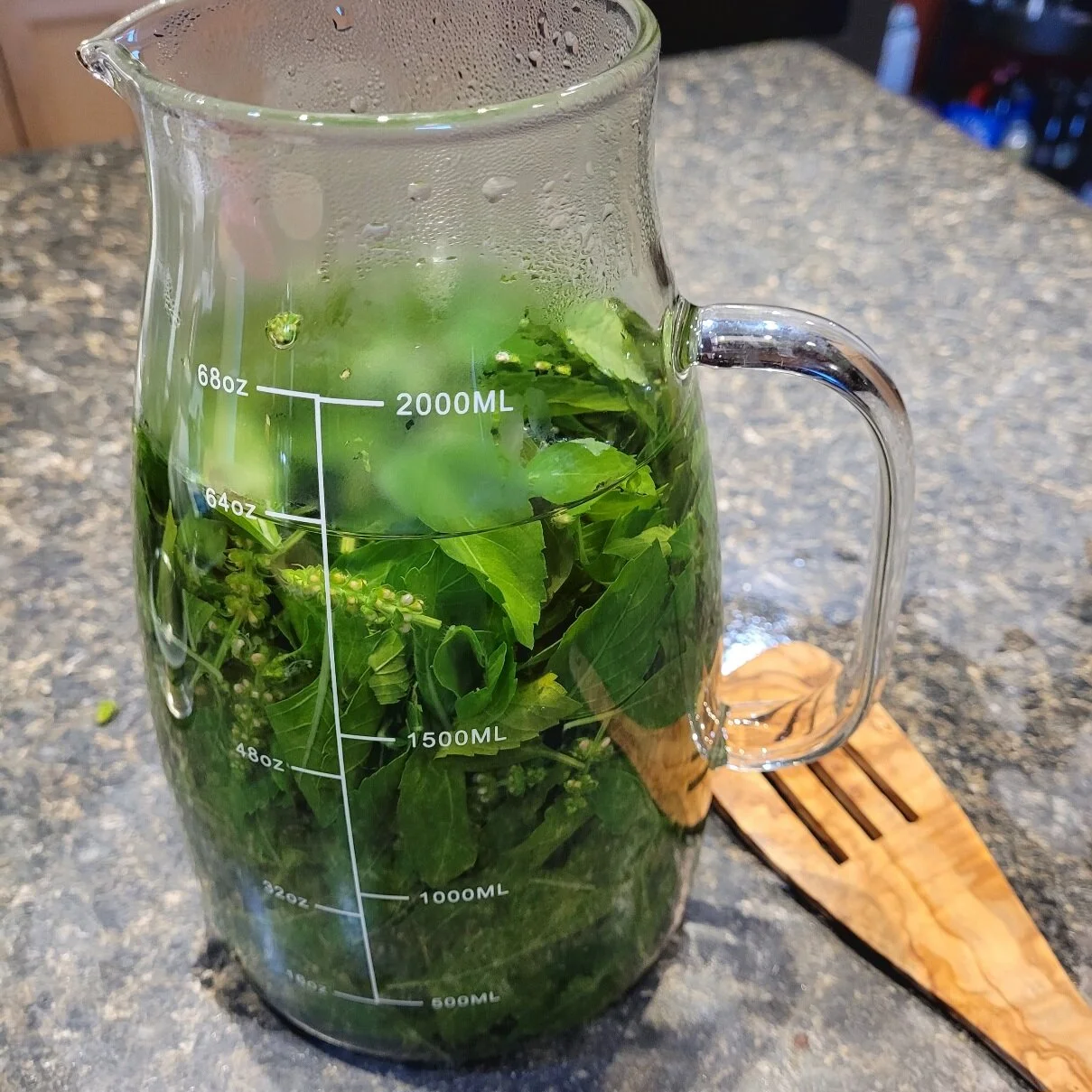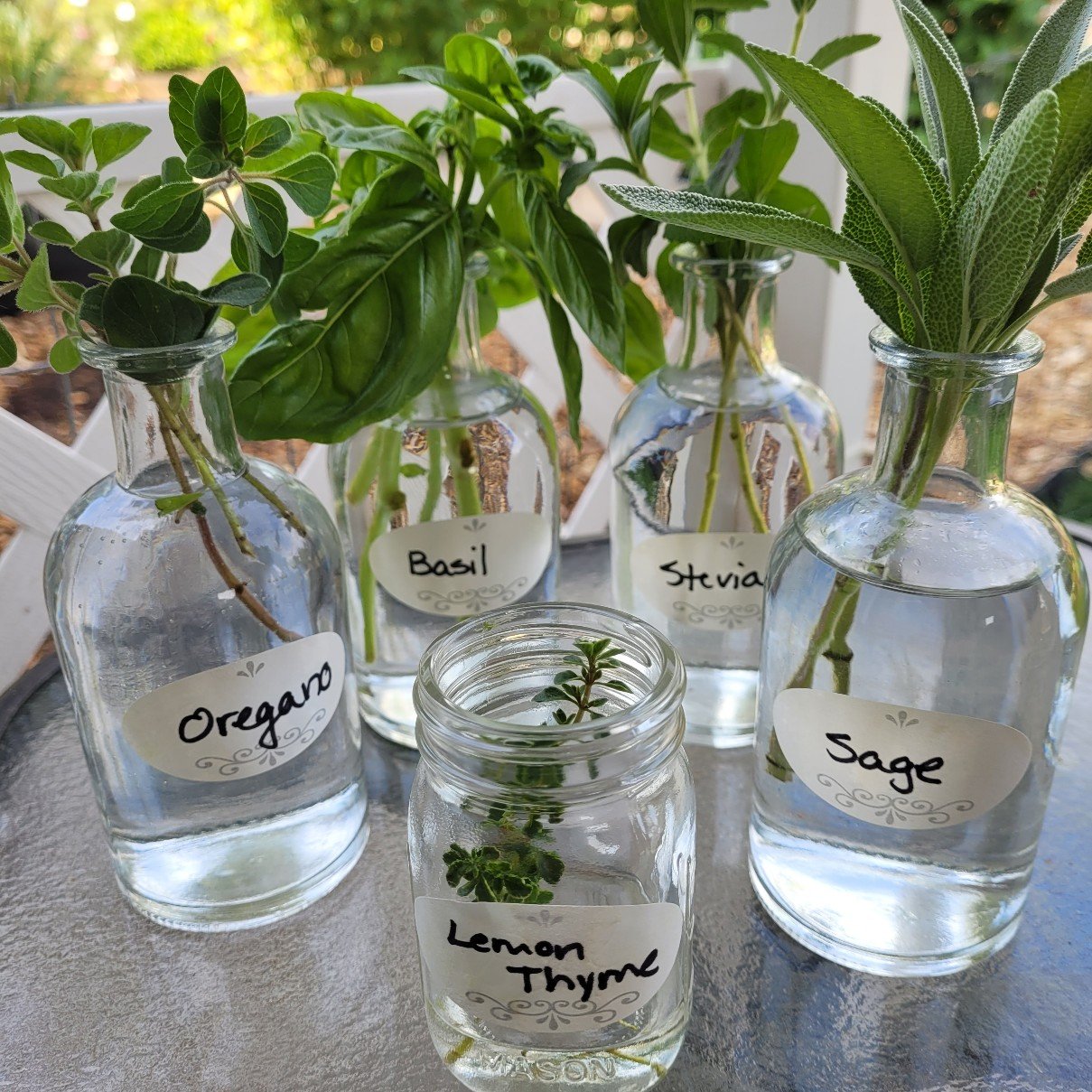Kitchen Garden Planning
As an affiliate, I earn a commission from product sales completed through some of the links below. This is at no additional cost to you. Please know that I only recommend high-quality products that can stand up to the challenging Colorado climate.
The off-season is the perfect time to plan and prepare for the upcoming growing season in the kitchen garden. But what exactly is a kitchen garden? It’s a designated area to grow fruits, vegetables, herbs, and even beautiful flowers. Traditionally, it’s located near the kitchen, making it easy to harvest fresh ingredients before cooking. It should be close enough to the house to visit the garden often, even daily.
This post is simply an outline for planning the kitchen garden for the first time or the upcoming season. The following steps may take further research, thought, and possible action but will give you a solid kitchen garden plan. It’s well worth the effort!
To help you get started, download the following free 2025 kitchen garden planner. The planner was designed to complement this blog post and capture the details and ideas for your garden.
Free 2025 Kitchen Garden Planner!
🛠️ What’s included?
-Step-by-step guidance for planning your kitchen garden
-Tables to organize seed-starting & plant buying information
-Space to map out your ideas
Whether starting fresh or refining your approach, this planner is a practical tool to make 2025 a successful gardening season.
Assess Space, Budget, & Time
The first step is assessing the garden space. Do you currently have a kitchen garden? If not, choose a location, source materials, and install the garden. The potential space needs about 6 hours of full sun in the summer and irrigation should be automated. Before planting, check for potential issues like weeds, soil quality, structural concerns, or anything else that might need your attention. I highly recommend raised beds as the best choice for vegetable growing in Colorado. See why on this post: Raised Beds for Vegetable Growing in Colorado.
For now, let’s assume you either have or will soon have the perfect kitchen garden area. If you need guidance for a new or existing kitchen garden, I offer paid consultations to guide you on the path to success.
GROWING SPACE
Creating a successful kitchen garden is about being practical with the space, time, and money needed to commit to the project. Let's start by determining the growing space for the upcoming season. Measure the available space, whether it's in raised beds or the ground. Don’t include space for paths, etc, when measuring. We are simply looking for the amount of growing space in square feet. For example, a 4 ft by 4 ft raised bed has 16 square feet of growing space.
Now that you know the growing space measurement, you can roughly calculate the number of plants to grow. I recommend using a block method of planting which is a modified approach inspired by the Square Foot Gardening Method™. This generally means only using the spacing measurement and disregarding the row spacing measurement. However, if you prefer row planting, adjust accordingly. Note: Plant spacing measurements are often available on seed packets.
For example, plant Roma tomatoes in a 24 inch square if using block style planting. If using row planting, they should be 24 inches apart but 36 inches from the nearest row.
My Roma Tomato in this photo is planted in the center of this 4x4 foot raised bed.
BUDGET
Budget is a crucial aspect of your kitchen garden adventure. Raised beds can be made from a variety of materials such as reclaimed lumber (untreated only), heat-treated pallets, galvanized steel, pavers, felled trees, large rocks, and more. If you prefer an easier, time-saving route, there are numerous garden kits available for purchase. My journey began with small steps - a couple of 3x4 cedar planters and some large containers. Over the years, as my experience, budget, and time expanded, so did my garden. Currently, I use coated steel raised beds from Garden in Minutes along with some trusty old cedar garden beds and even fabric grow bags.
Raised beds should be filled with high-quality soil, and while it can be pricey, it’s a worthwhile investment. Good soil is critical to all development stages of plants and a bountiful harvest. Whether you choose bagged soil or buy in bulk ensure it’s a quality product guaranteed to be herbicide-free. However, do not use a “potting mix” labeled soil because this compacts and holds too much water for raised beds. Instead, use a 3 topsoil to 1 compost ratio or a specifically labeled raised bed mix.
Living in Colorado, automatic irrigation is your garden’s best friend. Consistent watering is vital for healthy plants and tasty vegetables, especially since we don’t get regular rain. Hand watering is time-consuming and doesn’t allow for days off. Missing a day could lead to bitter cucumbers, blossom end rot on tomatoes, or worse - plants vulnerable to pests and disease. I highly recommend drip irrigation, available at online sellers or in kits at the local home improvement store. I use and highly recommend this irrigation system from Garden in Minutes.
Trellises are great for climbing or sprawling veggies like tomatoes, cucumbers, beans, and peas. Trellis options include bamboo stakes, metal cages (like tomato cages), and metal or wood panel and arch trellises.
My DIY cattle panel arch trellis with Sugar Pie Pumpkins.
Garden tools are necessary for clean cuts while pruning and digging those perfect holes for your plant babies. While there is a tool available for every garden task, it’s possible to get by with just a few. The basics include:
hand pruners
gloves
shovel
trowel
pruning snips
TIME
The time commitment for a successful kitchen garden can vary. However, about 4 hours per week for a 100 square feet raised bed growing space is a good estimate, excluding set-up, spring planting, and fall clean-up. A 20 minute daily kitchen garden walk-through allows you to check on plants, address any issues, and collect a harvest. On the weekends or as time allows, do pruning tasks, fertilizing, direct seed sowing, weeding, and other duties that may take a little longer.
Decide What to Grow
Navigating the world of seed catalogs and local nurseries can be a bit overwhelming. How do you decide what types and quantities of vegetables to grow? First, consider the number of people in your household and their vegetable preferences. If, for instance, only one person likes zucchini, just plant one of those (or even skip growing it and opt for the farmers’ market). This way, you don’t waste precious garden space on vegetables that won’t be used. Also, think about whether you’ll be preserving extra or sharing with others and account for that in your plan.
Do you cook using fresh herbs or enjoy creating herbal teas? I highly recommend adding your favorite herbs to your kitchen garden. Many grow very well here in Colorado! My favorites are basil (Genovese and Tulsi), thyme, oregano, parsley, cilantro, chamomile, mint, and sage.
Fresh Tulsi Basil Tea
Growing flowers in the kitchen garden are beneficial for a variety of reasons. Their bright colors and scent are beautiful but they also attract pollinators that benefit your vegetable plants. Edible flowers add unexpected color and taste to your mealtime dishes and beverages. Some flowers have medicinal properties, adding an extra layer of functionality to your garden. Also, cutting a bouquet of fresh flowers to bring indoors is a special perk of the successful kitchen garden.
As you peruse the catalogs and online stores for selections, pay attention to the “Days to Maturity” information. Considering the average frost-free days is essential (less than 150 days along the I-25 urban corridor in Colorado). Remember, 150 days is an average, and with elevation gain, particularly in the foothills and mountain areas, the growing season is even shorter. Some vegetables require a longer growing season, making them impractical in our region without additional protection against frost and freeze.
Additional seed starting posts can be found here:
Seeds, Propagation, or Starts
Because of the relatively short growing season in Colorado, only some vegetables are directly seeded into the garden. Others can be grown from seed indoors, propagated from cuttings, or purchased as plant starts from a local nursery. While seeds are cost-effective, there are essential supplies required to successfully germinate and grow them into healthy plants for your kitchen garden.
Necessary items for seed starting:
Dedicated space for seed starting.
Seed trays, pots, humidity domes, heat mats, soil, etc.
Effective grow lights.
Time and energy to check on them twice a day to monitor moisture, lighting issues, pest issues, etc.
Certain plants, especially herbs, can be propagated through cuttings. For example, taking cuttings from a purchased basil plant, placing them in water until roots develop, and then transferring them into soil is an effective method. Keep in mind that different plants have varying propagation methods, so be sure to research each type.
While growing from seed is a rewarding and cost-effective approach, purchasing plants from a local nursery is the easiest method. This option may cost more but is particularly helpful if you lack the time, space, or other resources for seed starting. I usually combine both, growing from seed and purchasing vegetable starts. In the spring of 2023, due to ankle surgery, I purchased all my kitchen garden plants. I was able to try some new varieties and had a very successful gardening year!
Inventory Current Seed Stock
When preparing to start plants from seed, begin with an inventory of your existing seeds. You can do this using traditional methods like pen and paper, or notebook, or do it electronically with a spreadsheet. Once you have that information, you’re ready to source more seeds.
You can purchase seeds online, and I’ve included this Botanical Interests affiliate link for your convenience. Botanical Interests is one of my favorite seed companies with a wide selection and high germination rates. Local nurseries are also great places to find a wide variety of seeds. Additionally, explore local community seed libraries or participate in seed exchanges, often advertised through social media or news outlets. Ask other local gardeners, too - they might have extra seeds they’re willing to trade or share.
Planning a kitchen garden for the season is necessary but also brings excitement to cold winter days. By evaluating your space, budget, and time, determining what and how much to grow, and taking stock of your current inventory, you'll be well-prepared for a successful and bountiful garden season.
Ready to take the next step? Find seed-starting posts here:


